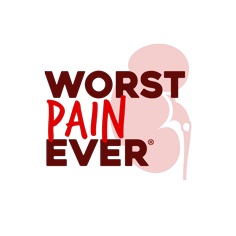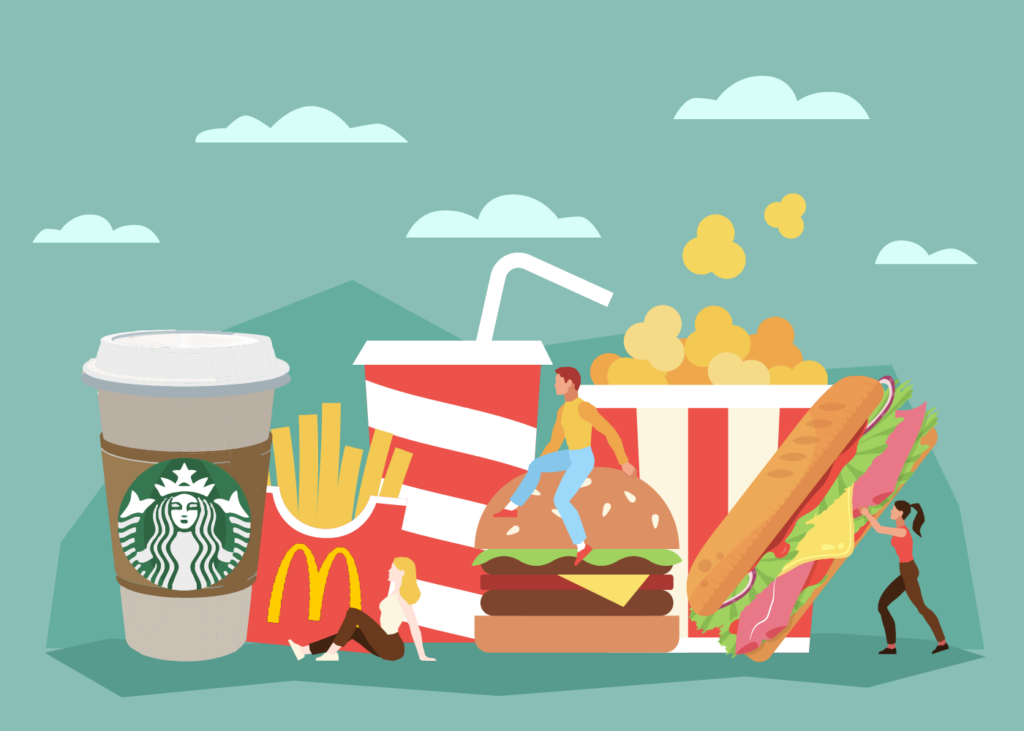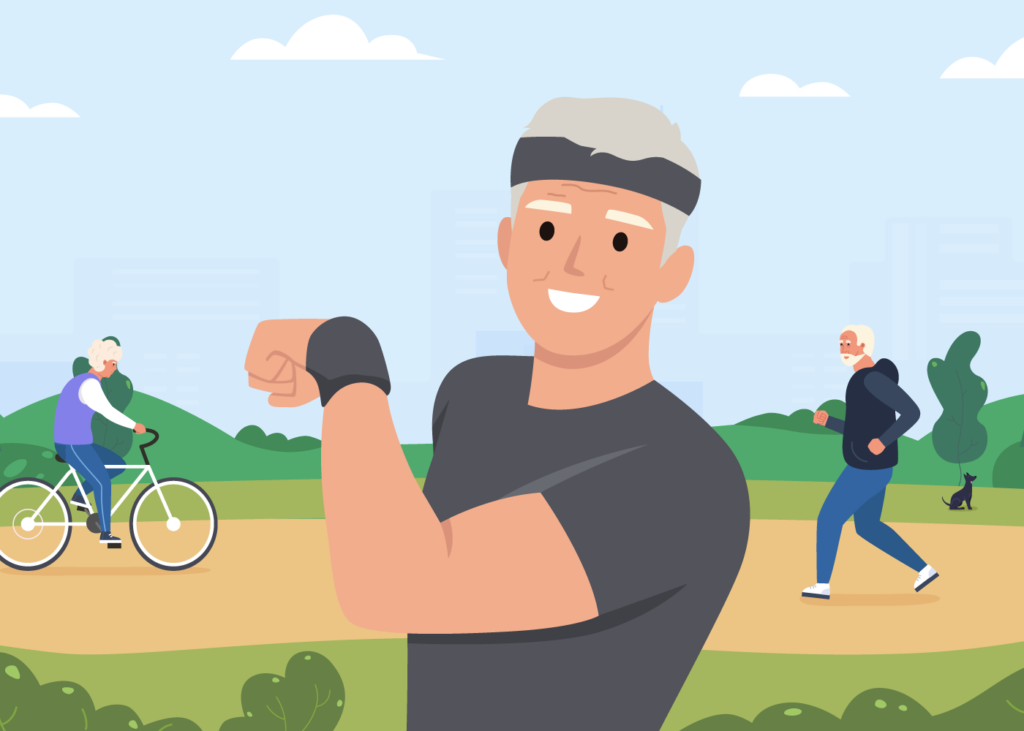As a stone former, juggling a kidney stone-friendly diet with life’s constants demands can be tough. There may be days where it’s simply easier to go for the convenient choice, even if it means eating higher sodium options – like fast food.
But fret not! Together with Melanie Betz, also known as The Kidney Dietitian, we’ve compiled the ultimate guide featuring the top 5 fast-food chains in America, so you can get your quick bites without the kidney stone worries.
What should I look out for as a kidney stone former?
For most people, there are 3 primary dietary triggers you should be mindful of:
1) Too Much Added sugar
Consuming too much added sugar can make your urine more acidic1. The recommended daily intake of sugar for an adult is 24 g for women and 36 g for men2. When you consume more sugar than recommended, your urine pH may fall, which can increase your risk of forming uric acid and calcium oxalate stones3.
2) Too Much Sodium
A little salt is OK, as long as you’re within the recommended sodium of 2,300 mg (the equivalent of one teaspoon)4. When you eat too much sodium, it can cause the calcium levels in your urine to go up5. Increased urine calcium also means a greater risk of calcium stone formation – the biggest and most common cause of kidney stones!
Research also shows that eating too much sodium can reduce urine citrate. When there’s less citrate present to bind with urinary calcium, free calcium may combine with oxalate in your urine to form calcium oxalate stones6.
3) Too Much Animal Protein
Eating too much animal protein from foods like beef, chicken, pork, fish and poultry can increase the amount of acid, calcium and oxalate in your urine – a recipe for disaster for people with calcium oxalate stones.
What are my best fast-food options?
Whether you’re in line at Starbucks for your daily caffeine fix or craving some quick Mexican fare at Taco Bell, we’ve got you covered.
- McDonald’s
When you think of McDonald’s, you may picture your favorite American classics such as pancakes or burgers. Why not try something new for a change? For breakfast, the Fruit & Maple Oatmeal is a great lower-sugar option. They also provide essential nutrients and fiber that cannot be found in other menu items, without the excess sodium and unhealthy fats.For lunch and dinner, go ahead and reach out for a Plain Cheeseburger, Hamburger or Filet-O-Fish. These choices contain less sodium that can aid in kidney stone prevention. Along with that, you can have a Small Fries with No Added Salt, Side Salad, or Apple Slices. These are better alternatives compared to other salty food options at McDonald’s. For an added dose of calcium, feel free to pair your meal with a 1% Low Fat Milk Jug.
- Starbucks
Grabbing your daily dose of caffeine from Starbucks? Think again! Your number one go-to drink may not be as healthy as it seems. Many beverages over at the popular café chain are loaded with sugar that’s easily worth more than your entire recommended daily intake.One great choice is a Grande Size Starbucks Cold Brew Coffee, with 2 pumps of brown sugar syrup and a generous amount of 2% milk. By adding just 2 pumps of brown sugar, you’ll still be able to satisfy your sweet tooth while taking only half the amount of sugar. Plus, adding milk will help you to achieve your daily recommended calcium intake of 1,000–1,200 mg9.
If you’re looking for a non-caffeinated alternative, try reaching out for a simple Decaf Coffee or Herbal Teas. Many beverages at Starbucks contain loads of sugar that can encourage more kidney stones to form. For instance, Starbucks Refreshers can contain almost your entire daily recommended sugar intake – with as much as 35 g of sugar found in the Frozen Strawberry Açaí Lemonade Starbucks Refreshers Beverage.
- Subway
When it comes to crafting the perfect sandwich, Subway offers you the opportunity to construct a kidney stone-friendly meal – from scratch! From whole-grain bread, lean proteins and fresh greens, you’re put in the driver’s seat and get to decide what goes in (and out) of your meal.For starters, consider going for a 6’ Multigrain Bread. For protein, choose Tuna or Grilled Chicken. If you’re aiming for the lowest sodium option, the Veggie Delight is the way to go.
Next, don’t hesitate to get a generous helping of vegetables for that much-needed fiber. However, be sure to steer clear of the Pickles and Pickled Jalapenos and Banana Peppers to keep your sodium intake in check! If oxalate is a concern, consider swapping Spinach for Iceberg Lettuce. Don’t forget to add in Swiss Cheese or Mozzarella for some calcium.
Go easy on the condiments and opt for lower sodium options like Oil, Red Wine Vinegar, Honey Mustard, Mayonnaise, or Sweet Onion Sauce. If you want to add in a side, choose Fruits over Chips or Soup to cut down on your salt intake.
- Taco Bell
If you’re craving Mexican, you might find yourself at Taco Bell. Choose lower sodium options like a Chili Cheese Burrito or Bean Burrito. The Cheese Quesadilla and Crunchy Taco are also great choices to pick for stone formers! Pair them with a side of Black Beans for that much needed fiber at only 140 mg of sodium. Go ahead and throw in some extra cheese for some calcium to help bind the oxalate from the beans.
If you’re looking to load up on fiber, consider the Power Menu Bowl – Veggie and pack it with loads of lettuce, tomatoes and onions.
While these dishes are relatively lower in sodium compared to the other options over at Taco Bell, they still contain quite a bit of salt – around 850 to 1,000 mg. This translates to about half your recommended daily intake of salt! But remember, nobody makes a kidney stone from just one meal. All foods can fit in a kidney stone friendly diet. - Chick-Fil-A
With their signature Chick-Fil-A Sandwich, this fast-food chain has managed to earn a massive following by serving up delectable chicken goodness. But behind all that spice and flavor that’s gotten you hooked; how much sodium do you think your typical Chick-Fil-A meal contains?
The iconic Chick-Fil-A Sandwich has a sodium content of 1,400 mg, beating chicken sandwiches from other restaurants like McDonald’s – where a McChicken sits at 817 mg. Even seemingly healthy options like the Cobb Salad contains a whopping 2,200 mg of sodium, which nearly exceeds your recommended intake for one day!
The good news is that low sodium options still exist at Chick-Fil-A. The Grilled Chicken Sandwich as well as Grilled Nuggets stand out as great choices due to their significantly lower sodium content. The sandwich contains 770 mg of sodium while the nuggets contain just 440 mg – a stark contrast to the other options like the Spicy Chicken Sandwich at 1730 mg.Complete your meal with a Fruit Cup or the Kale Crunch Side to ensure a nutritious balance without excess sodium. It’s advisable to leave off the almonds in these sides if you’re looking to limit your oxalate intake!
Conclusion
It can be difficult to make the right choices for our kidney stones, especially at fast food restaurants. Remember: Maintain your animal protein intake and avoid options that are very high in salt and/or sugar. Instead, opt for options that contain more fiber and calcium. Even when it comes to fast food, you can make better choices to help your body get the much-needed nutrients without increasing your risk of developing kidney stones.
But of course, none of this beats a good ol’ fashioned home-cooked meal where you get full control over your nutrition – and taste!
Melanie Betz MS, RD, CSR, FAND is a registered dietitian who specializes in kidney stones. After working in the Section of Nephrology at the University of Chicago, she founded The Kidney Dietitian, an online platform to help people prevent kidney stones with food. Her approach to kidney stone prevention is science-based and personalized – as no kidney stone and no person is the same.
She is passionate about helping kidney stone formers enjoy eating, as well as preventing kidney stones. She has published her research investigating patient knowledge and adherence to renal diets, plant based diets in kidney disease, and the role of nutrition in kidney stone prevention. As a leader in the field, she is on the board of the Renal Dietetic Practice Group, National Kidney Foundation of Illinois and the Dietitian Advisory Group for the National Kidney Fund. You can find her at www.thekidneydietitian.org and on Instagram at @the.kidney.dietitian
Sources:
- Felson, S. (2023). What to Know About a Urine pH Test. WebMD. Retrieved from: https://www.webmd.com/a-to-z-guides/what-to-know-about-a-urine-ph-test#:~:text=What%20you%20consume%20on%20a,like%20sugary%20foods%20and%20sodas.
- The Nutrition Source. Harvard School of Public Health. (2022). Retrieved from: https://www.hsph.harvard.edu/nutritionsource/carbohydrates/added-sugar-in-the-diet/#:~:text=The%20AHA%20suggests%20a%20stricter,of%20sugar)%20for%20most%20men.
- Kidney Stones. Johns Hopkins Medicine. (n.d.). Retrieved from: https://www.hopkinsmedicine.org/health/conditions-and-diseases/kidney-stones
- Sodium Intake and Health. Centers for Disease Control and Prevention. (2023). Retrieved from: https://www.cdc.gov/salt/index.htm#::text=Most%20People%20Eat%20Too%20Much,of%20a%20healthy%20eating%20pattern.
- Sakhaee, K., Harvey, J.A., Padalino, P.K., Whitson, P. & Pak, C.Y.C. (1993). The Potential Role of Salt Abuse on the Risk for Kidney Stone Formation. American Urological Association. Retrieved from: https://www.auajournals.org/doi/epdf/10.1016/S0022-5347%2817%2935468-X
- Phillips, R., Hanchanale, V., S., Myatt, A., Somani, B., Nabi, G., Biyani, C., S. (2015). Citrate salts for preventing and treating calcium containing kidney stones in adults. National Library of Medicine. Retrieved from: https://pubmed.ncbi.nlm.nih.gov/26439475/#:~:text=Oral%20citrate%20therapy%20increases%20the,crystallisation%20thus%20reduces%20stone%20formation.
- Lacey, E. (2023). Should I be Avoiding Oxalates? Colorado State University. Retrieved from: https://www.chhs.colostate.edu/krnc/monthly-blog/should-i-be-avoiding-oxalates/#:~:text=Oxalates%20are%20natural%20compounds%20found,body%20as%20a%20waste%20product.
- Holmes, R., P., Goodman, H., O., Assimos, D., G. (2015). Contribution of dietary oxalate to urinary oxalate excretion. Science Direct. Retrieved from: https://www.sciencedirect.com/science/article/pii/S0085253815474629
- Get Enough Calcium. U.S. Department of Health and Human Services. (n.d.). Retrieved from: https://health.gov/myhealthfinder/healthy-living/nutrition/get-enough-calcium





